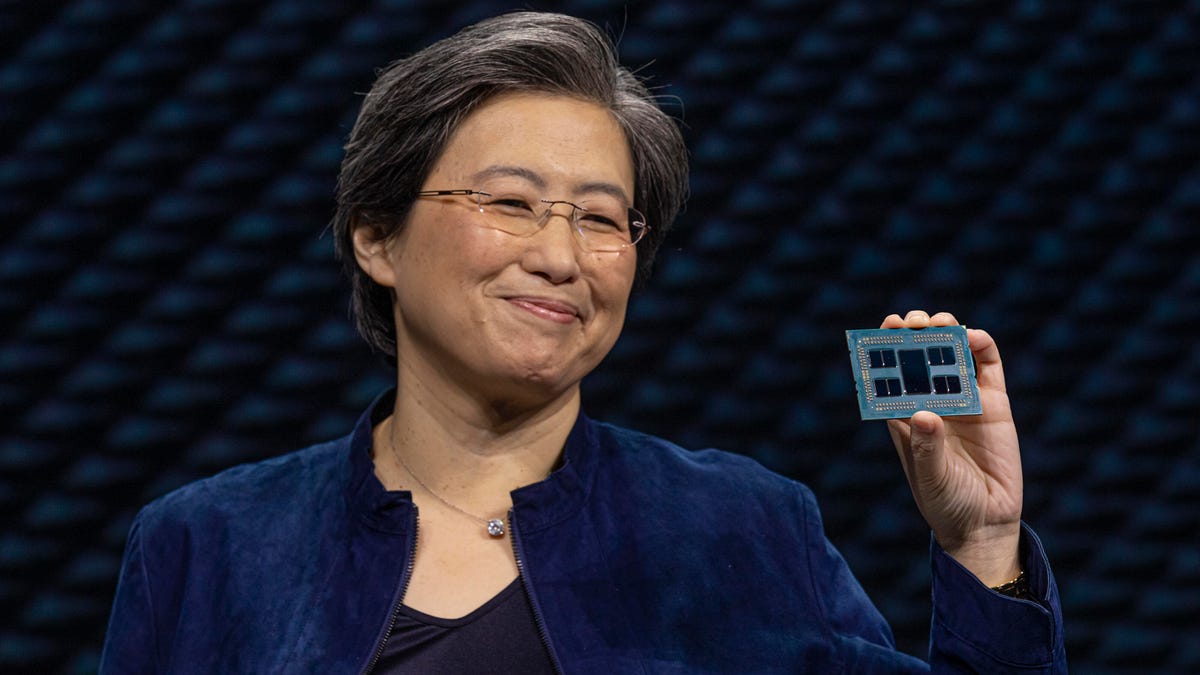AMD to acquire chipmaker Xilinx for $35B as chipmakers race to be the biggest
The combined company has an estimated value of $135 billion, but the acquisition has yet to pass regulatory hurdles.

AMD chief Lisa Su presenting at CES in January 2020.
AMD has entered an agreement to acquire Xilinx for $35 billion, AMD said Tuesday. It's an effort to make AMD "the industry's high-performance computing leader," according to Lisa Su, the company's chief executive. The two firms would focus on producing a variety of chips and software for PCs and gaming, as well as products and software across the automative, communications, industrial, aerospace and defense industries.
"Joining together with AMD will help accelerate growth in our datacenter business and enable us to pursue a broader customer base across more markets," said Xilinx CEO Victor Peng.
Su would be the chief executive of the combined company, while Peng would become president of the Xilinx business arm. The combined company has an estimated value of $135 billion, but the acquisition has yet to pass regulatory hurdles, including approval by AMD and Xilinx shareholders. AMD said it expects to close the deal by the end of 2021.
If it were to pass regulatory review, the acquisition would be part of a wave of consolidation sweeping the chip industry, as semiconductor companies scramble to build products packed into phones, PCs, data centers, cars and other computing devices. Nvidia is trying to buy Arm, a designer of chips and chip technology used in every smartphone, a major expansion beyond Nvidia's business of graphics and artificial intelligence chips.
Read more: The best gaming desktops of 2020
Xilinx makes an unusual type of processor called an FPGA, short for field programmable gate array. Most processors have a fixed design, but FPGAs can be reprogrammed to perform many different tasks. They're expensive, but companies making network equipment have long relied on them to support the newest communications standards.
FPGAs also are useful when it comes to 5G equipment and chips to accelerate artificial intelligence work. One big Xilinx priority is AI chips.
A merged AMD and Xilinx could also become "a leading supplier of compute platforms in the next high-growth segment of computing: at the edge of the network in base stations," analyst firm Jefferies said. "In contrast to the data center, where we think a general purpose architecture wins, we think the edge will require low-latency, semi-custom, workload specific solutions, which are XLNX and AMD strengths."
Intel acquired Xilinx competitor Altera in 2015. AMD and Intel have long been the main suppliers of chips for PCs and data centers. Though AMD for a time seemed to be dying, the company has instead become a powerhouse, partly because it gave up its manufacturing operations and bet on ultrahigh-performance chips for data centers. Intel, meanwhile, has struggled lately with product delays and has exited markets, like that for 5G mobile chips.





